How to Ride a Moto in Rwanda (And Not Die)
I’m often asked what has changed the most in my life since moving to Rwanda, and how it compares to living in Jamaica or the USA. What’s the biggest difference, people ask. Forget every answer I ever gave you. Here it is: I had to embrace the fact that I am probably going to die on the back of a moto. Let me explain. If you want to travel around Rwanda via public transport, your options are buses, taxis and motos. The buses are slow and make a bajillion stops between any two given points. They also don’t run late at night. Taxis are few and far between, and aside from the few very big bus parks, I am yet to find any designated taxi stands here. Sometimes taxis are outside the spots that foreigners frequent, sometimes they’re not. So apart from being significantly more expensive than the other options, the taxis are also not very convenient. That leaves me with one option: motos. Moto-taxis are notoriously dangerous. In Uganda it’s been estimated that up to five people die daily from moto accidents. They were considered so dangerous in Nigeria that the government banned pregnant women and children from riding on them. I was so scared of them when I first moved here that I declared I would ride buses everywhere and never ride a moto. Now I can’t even recall the last time I rode a bus. I chose fast and possibly deadly over slow and safe. I do think motos are much safer in Rwanda that some other countries. On the plus side, they are affordable, and run at all times of the night. On the negative side, there are usually a few seconds on every ride when I think this might be the ride that takes me out. Aaaah, the emotional anguish! I have fallen from motos a few times, but I have made it through a year of traveling by moto without dying. Thus, I give you all my wisdom for how to do the same.
- Get Your Own Helmet
Rwandan moto-taxi drivers carry helmets for their passengers. The problem is that these helmets won’t do much to protect your head if you go flying off the bike. The standard issue helmet has no real protection for the face. It’s just a metal covering for the back of the head, with a plastic visor in front, and a tie under the neck. My first question when I saw this was: what happens to my jaw if I get into an accident? I like my jaw, people. To make it worse, they often don’t fit (me) properly. That’s the problem with having a fivehead. My second week here, a friend of a friend met in a moto accident and seriously damaged her head. The following Saturday I went to get my own helmet. Having your own helmet will mark you as a foreigner, or at the very least, a bourgie local (so I’ve been told). Your afro will never stay perfect, and you will give up on wearing cute hairstyles because they won’t fit under the helmet. But don’t let vanity get in the way of keeping your jawline in tact. You need your teeth.
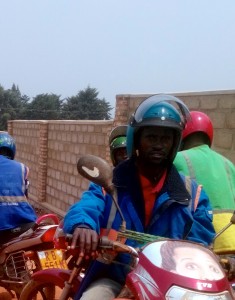
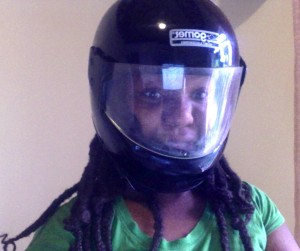
- Ask The Driver to Slow Down
You will tap the driver on his shoulder and say buhoro (Kinyarwanda) or pole (Swahili). To be clear, he may not actually comply. He might just look back at you and laugh loudly – partially because of your terrible pronunciation, partially because you are naïve enough to think he’ll actually slow down. Even if he continues speeding along merrily, you will feel a little better because you did something in an attempt to stay alive.
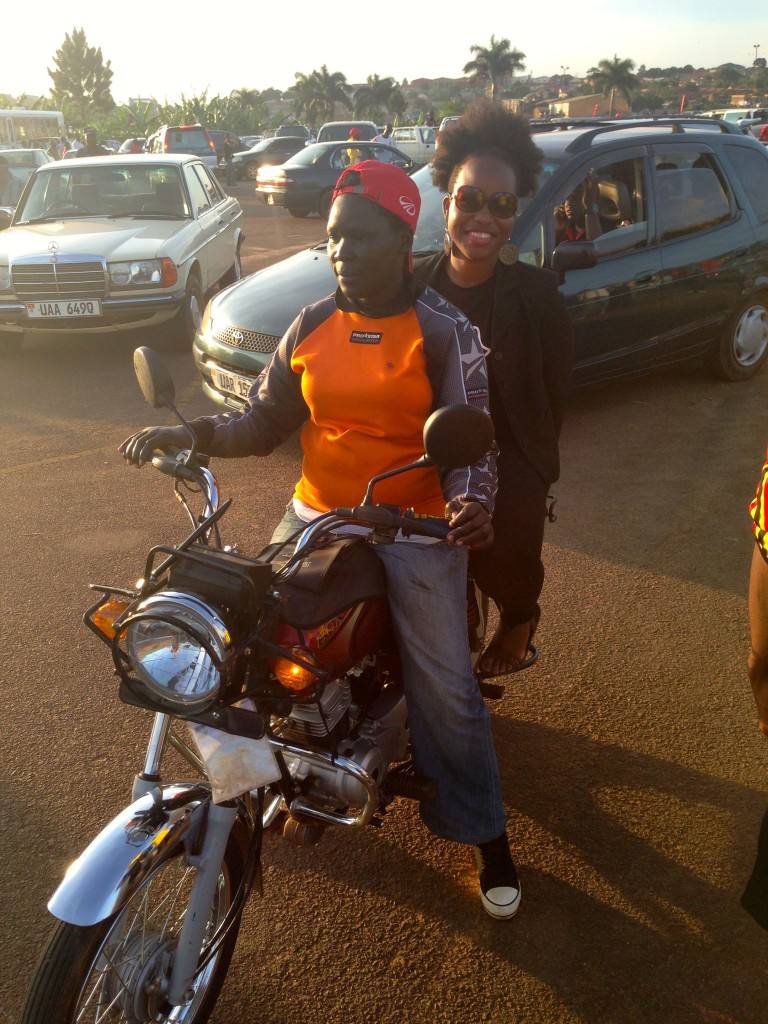
- Don’t Hold The Driver
Yes, I know this sounds counterintuitive. You will want to grab the driver to help stabilize yourself as you climb onto the bike. During the ride, you will think you’re about to fall off, so you’ll want to clutch the driver to assuage your fears. But if you look around you, you’ll realize that no other passengers are doing this. What are Rwandans doing on the back of motos? Texting, talking on the phone, listening to music, and sometimes transporting impossibly large packages. Some women are sitting sideways on the bikes and seemingly defying the law of Physics. They are certainly not distracting their drivers by holding on to them for dear life. For added stability, you can hold on to the metal loop that’s right behind the seat. Otherwise, put your hands in your lap and breathe.
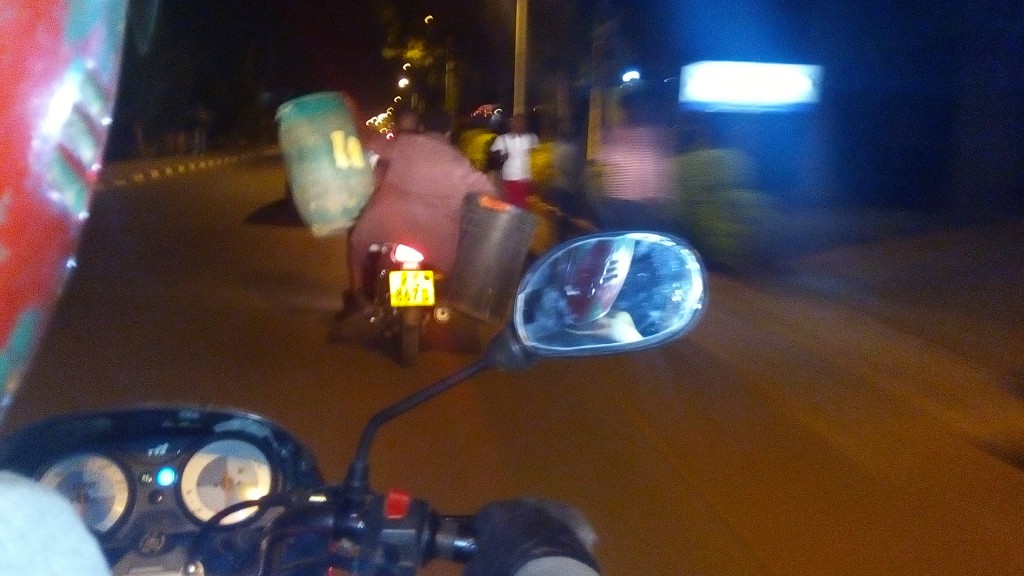
- Know What Your Ride Should Cost, And How to Negotiate
This tip is less about safety, and more about your sanity and financial health. I am used to fixed fares. When I want to go home in Jamaica, I go to my taxi stand and pay the established rate for my neighbourhood. Each community has their own taxi stand in town, so there is no need for varying prices. In the US, I was on public transportation which had fixed rates (Oh subway, how I miss you) or if I used a taxi, it had a meter. In Rwanda, most things require negotiation. So once I tell a driver where I’m going, I have to negotiate to the price I know I should pay. If the driver realizes I’m not Rwandan (which they do a solid 95% of the time), the negotiation becomes even harder because they want to give me the inflated foreigner price. I am so proud of the other 5% of the time when I apparently pass for Rwandan (till they start a real conversation with me during the ride and I have to explain in very bad Kinyarwanda that I speak English). The best strategy is to just tell them the price you want to pay at the beginning, and keep walking if they won’t take it. If the price is fair, they will often come back and offer to take you for that price. My other strategy is to ask them for a price. Once they give me the inflated fare, I start laughing and say ni menshi cyane. And then they laugh at me, probably because I’m saying it incorrectly, but they get that I mean that it costs too much. And they eventually let me pay my price, or something close enough. Win!
- Pray
My first few moto rides were spent hugging the driver’s waist tightly and repeating the 23rd Psalm. On my very first ride, I actually tried remembering how to say it in Spanish just so I could distract myself from the fear that was arresting me. I am generally not afraid of moto rides anymore, but a little prayer ain’t hurt nobody. So you might want to get your prayer on, or chant Nam Myōhō Renge Kyō to get you through. Safety concerns aside, riding motos can actually be really fun. There’s a certain freedom you feel as you zip past the bigger vehicles in traffic, and the feel the wind rushing against your face with the lush backdrop of Rwanda’s rolling hills in full view. If you close your eyes, you might even think you’re flying…
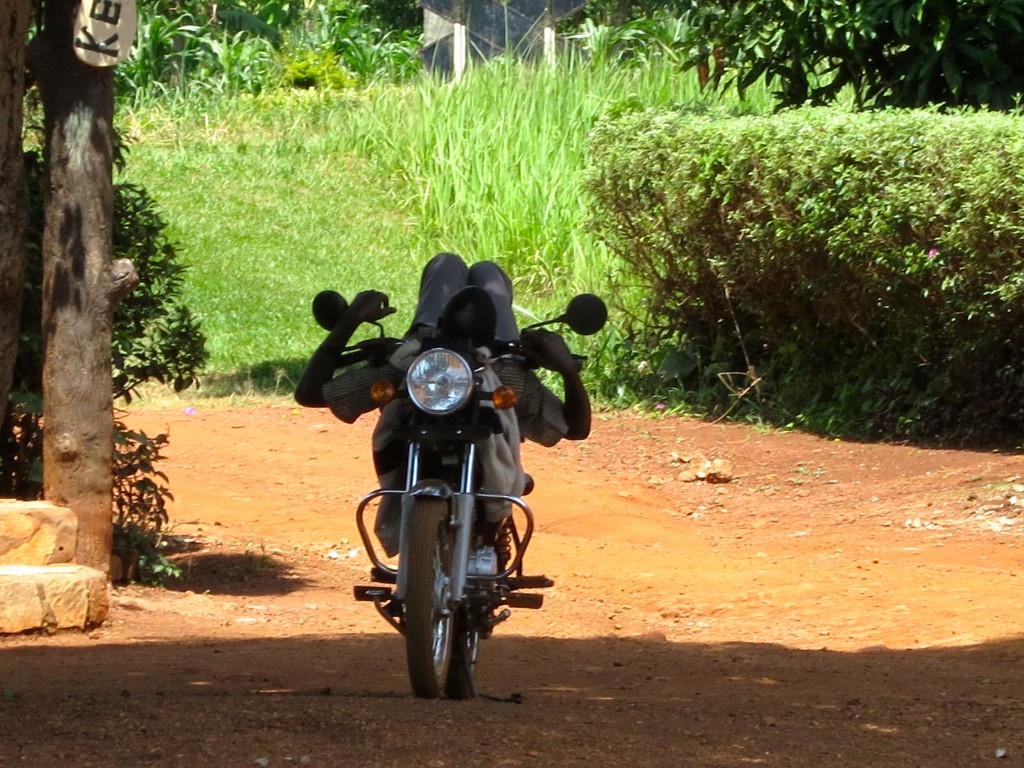
p.s. Naume is dope. Read more about her here: http://www.sbs.com.au/news/article/2014/05/15/ugandas-boda-bodas-meet-naume-kampalas-only-female-taxi-driver
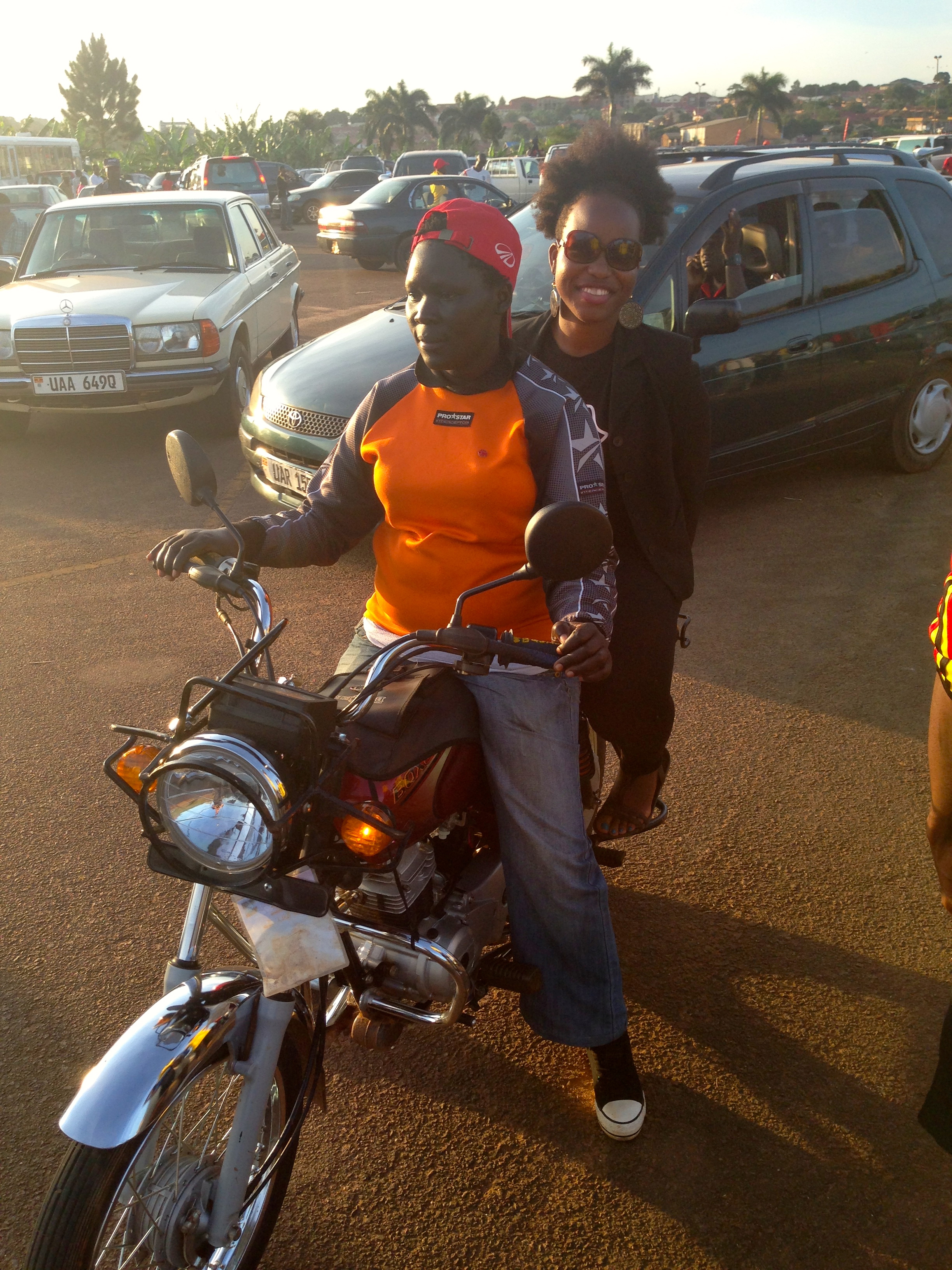








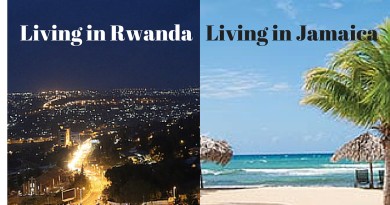


Sooo insightful and humorous Donnalee. I really enjoyed reading this. I can wait to read your next post!!!!
Thanks dear!